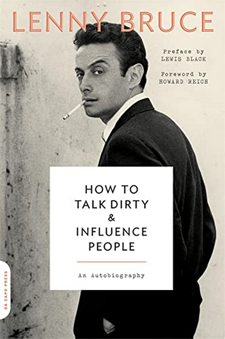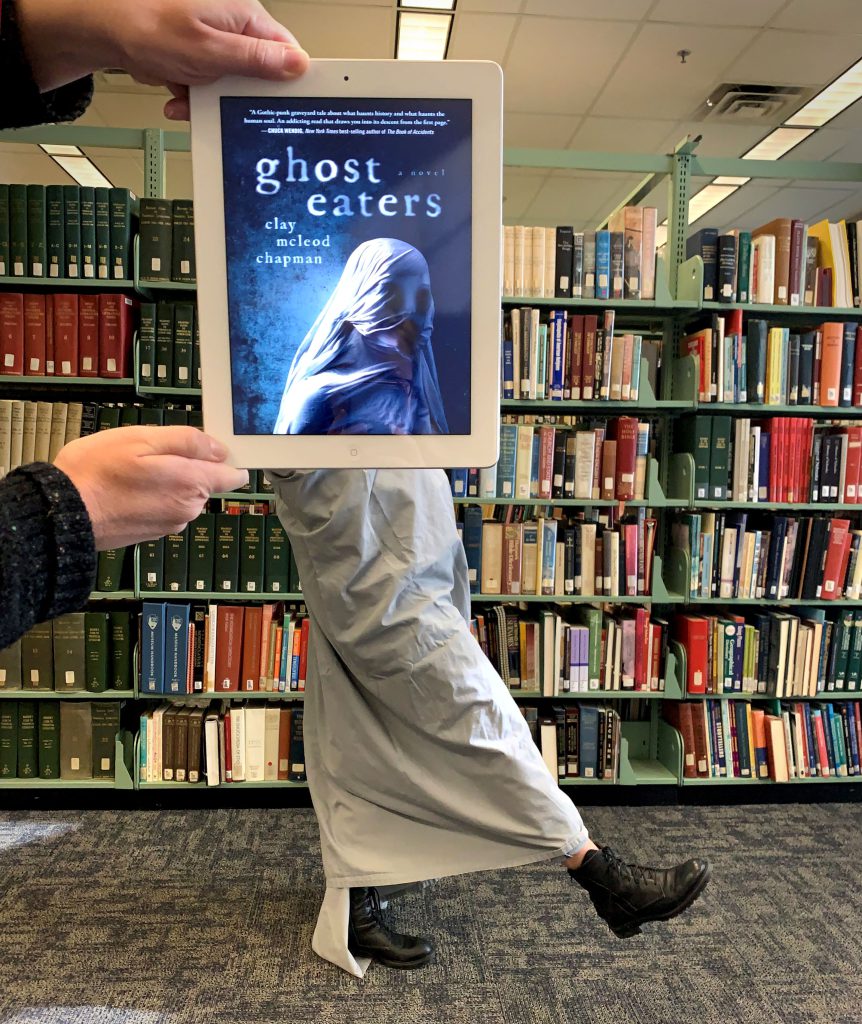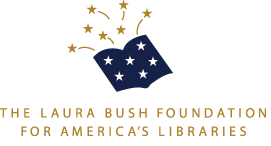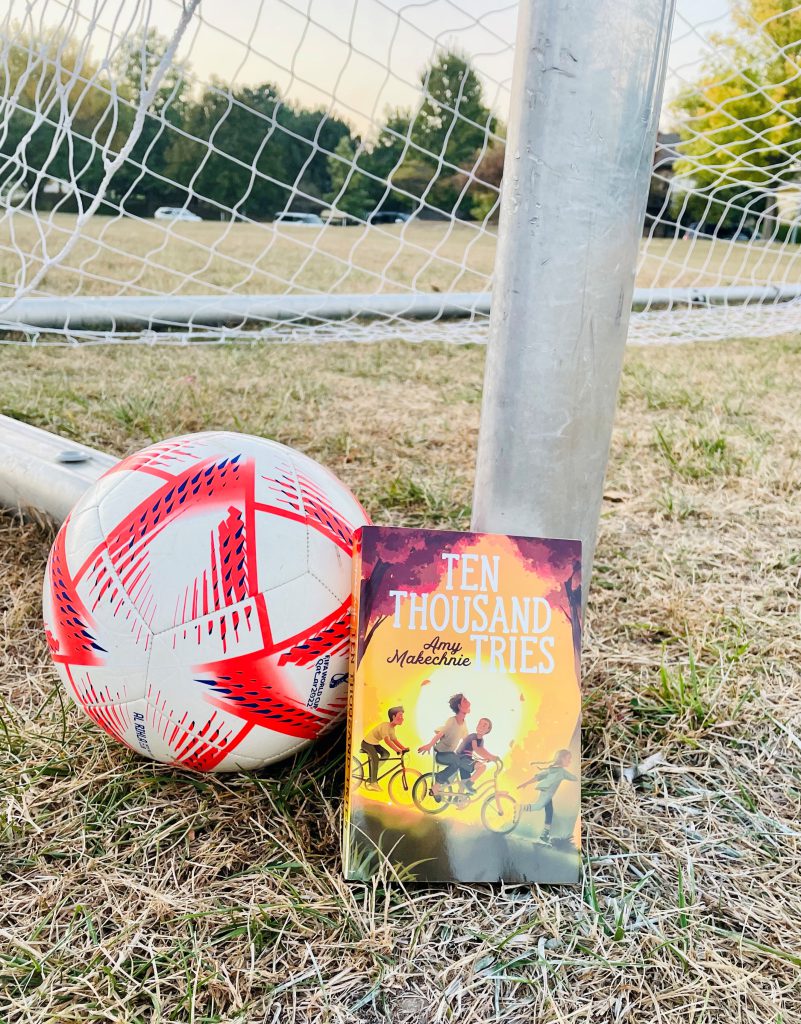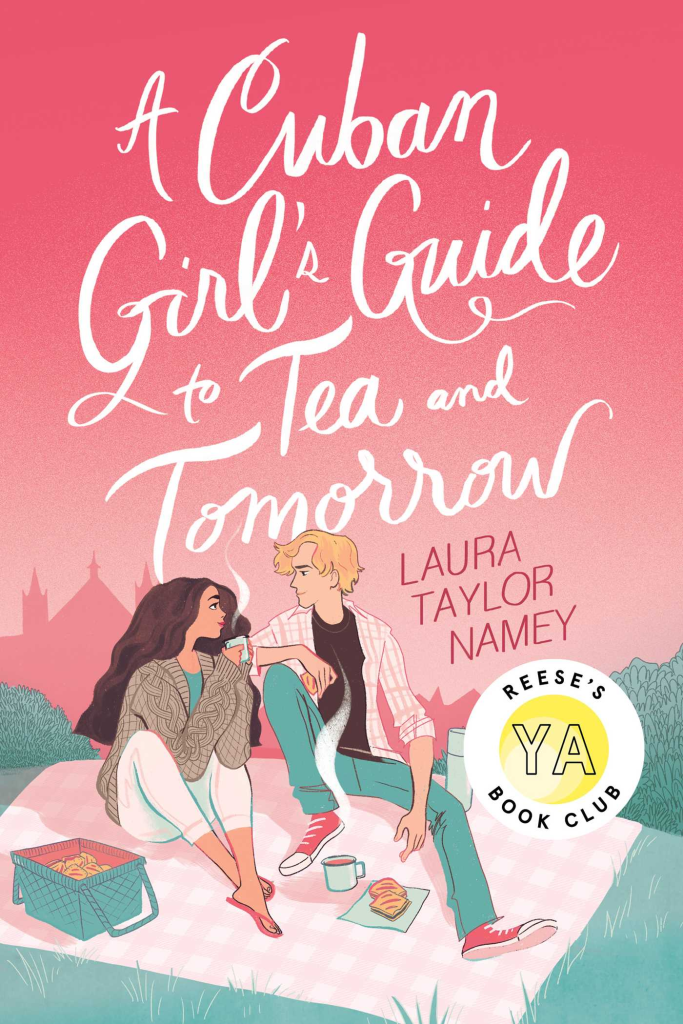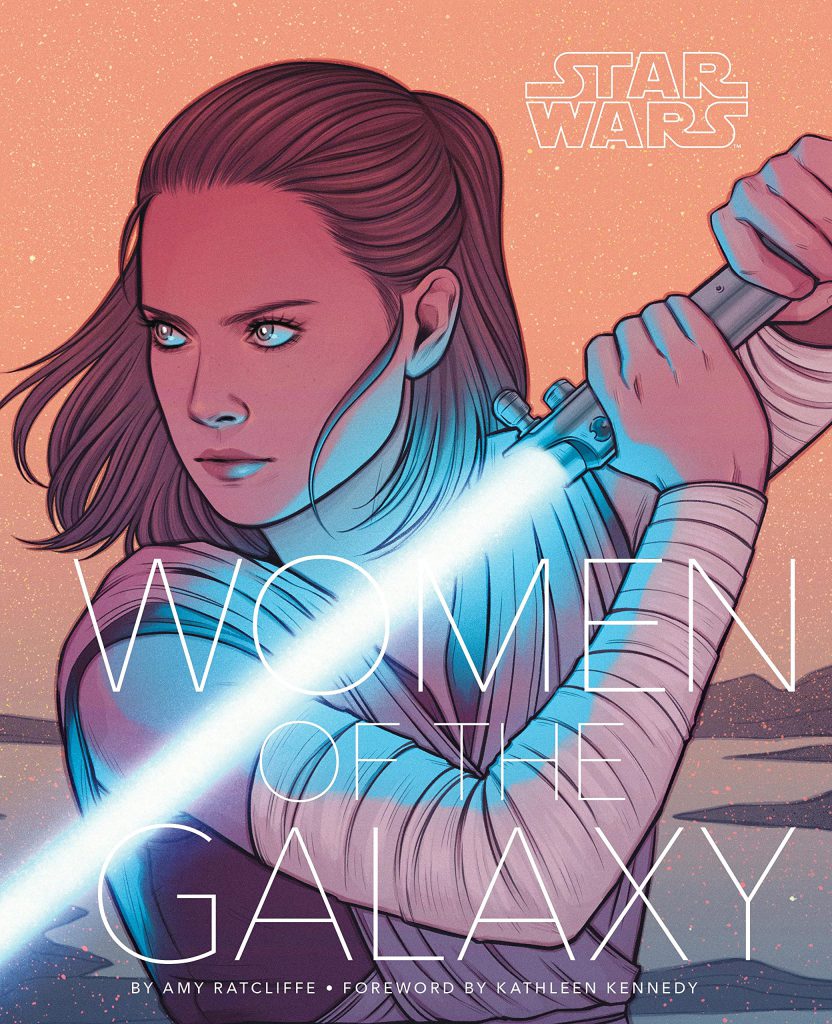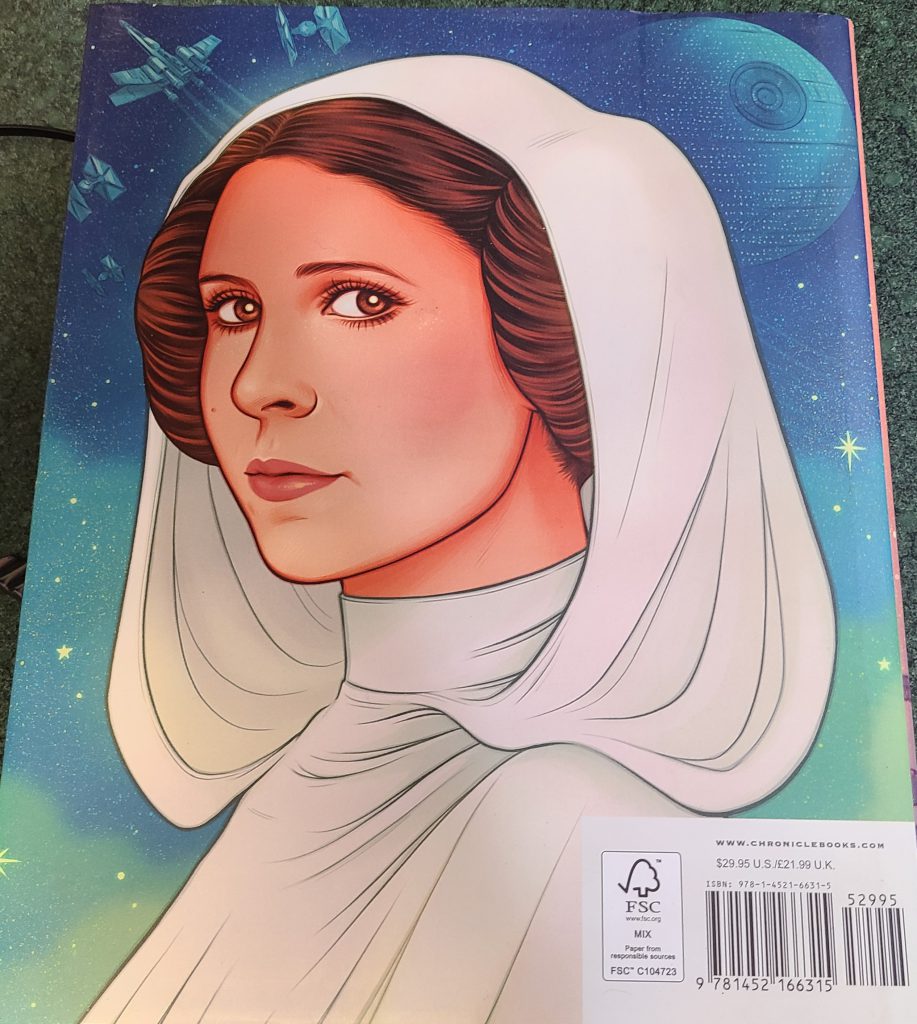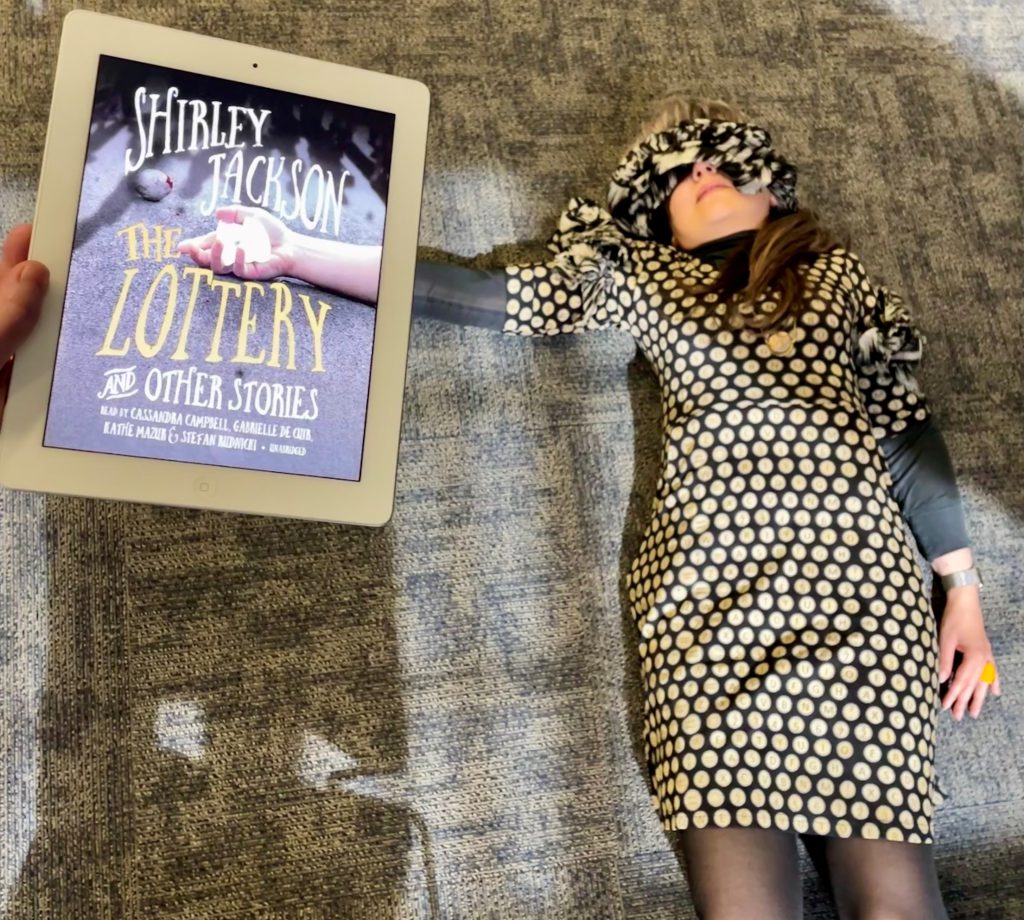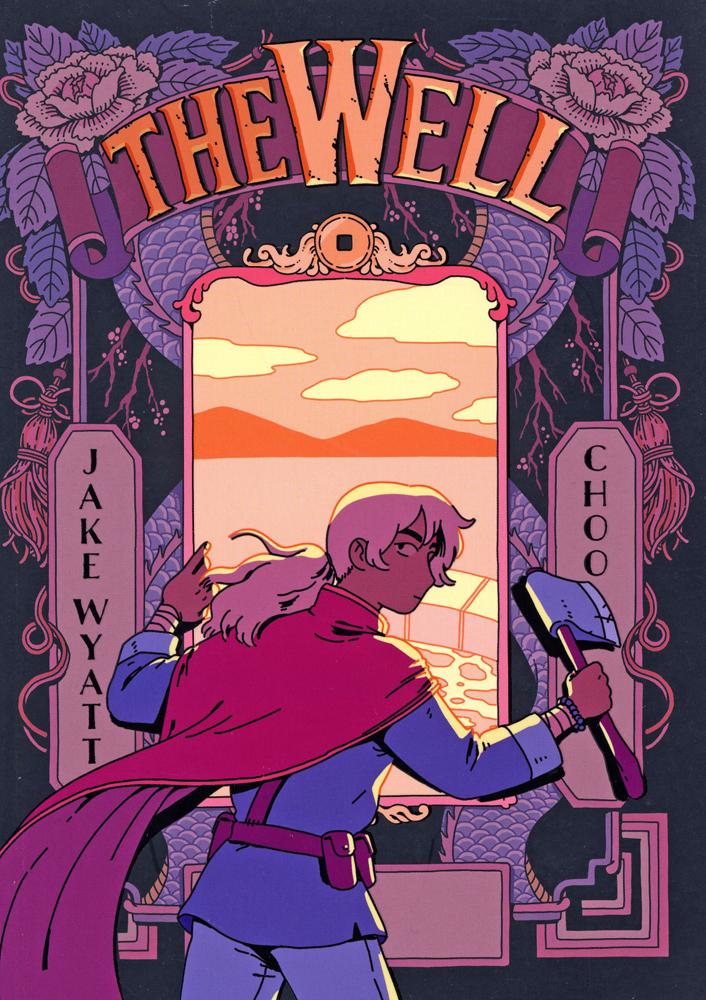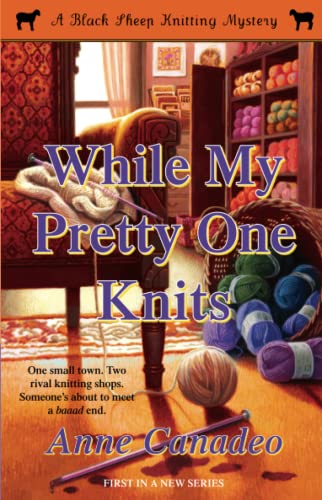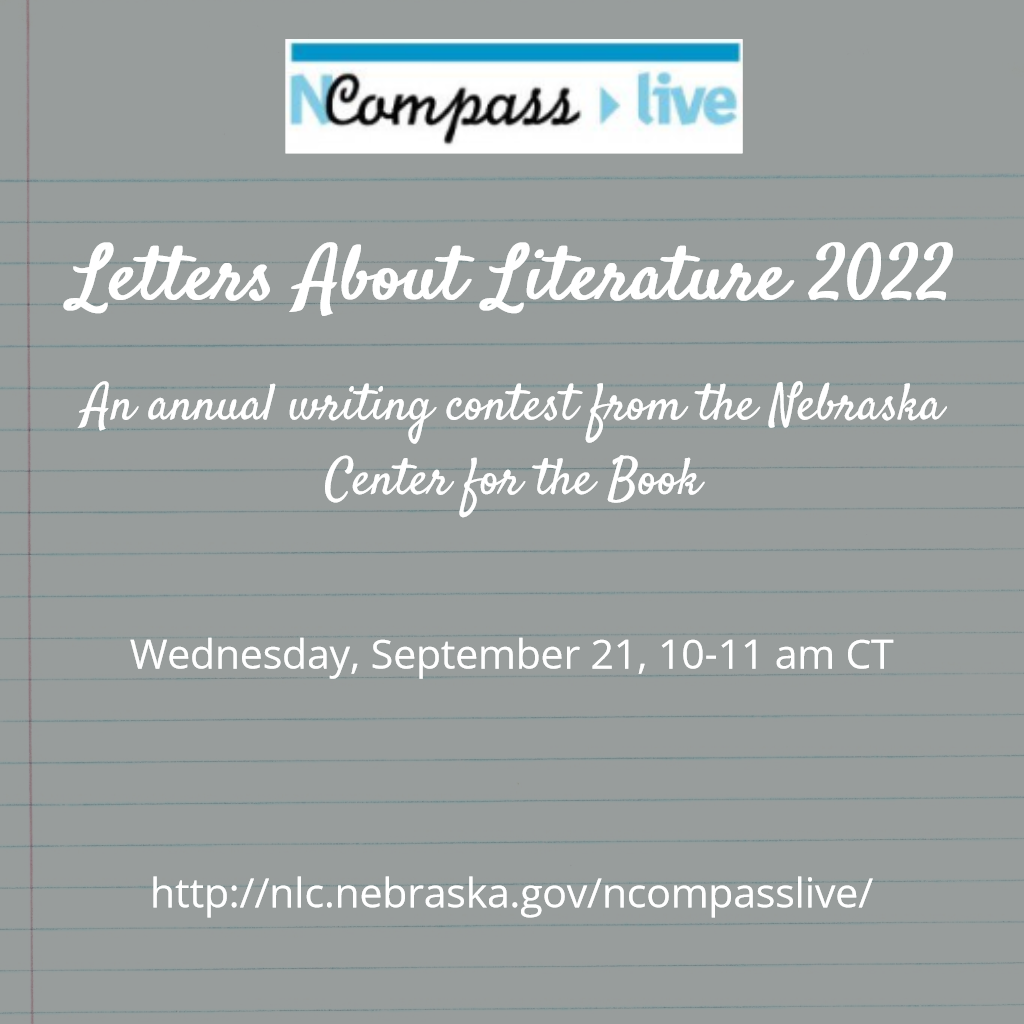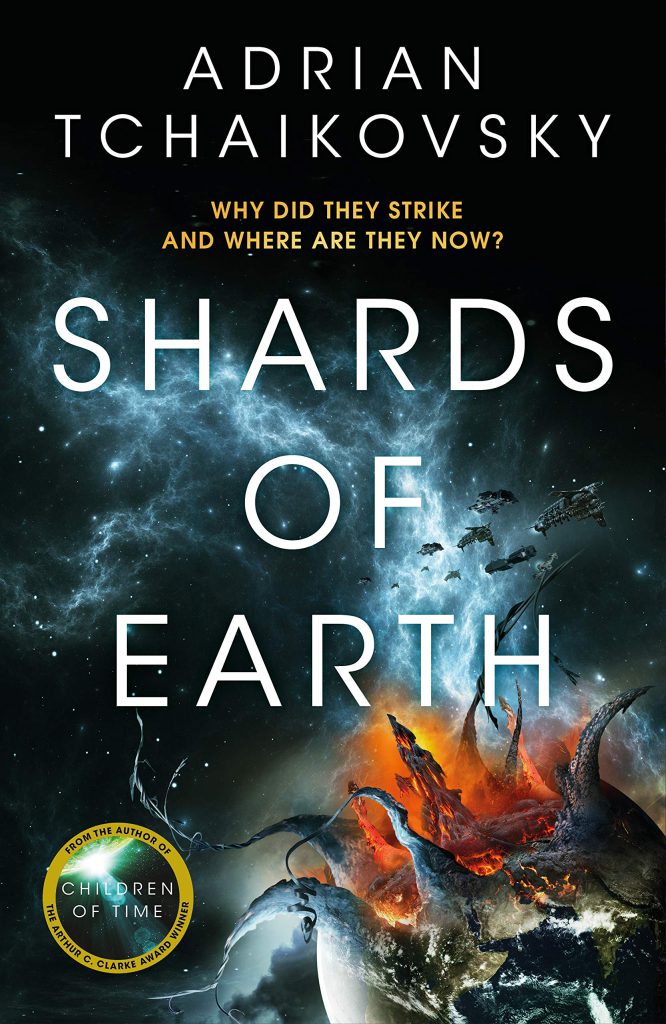Search the Blog
Categories
- Books & Reading
- Broadband Buzz
- Census
- Education & Training
- Friday Reads
- General
- Grants
- Information Resources
- Library Management
- Nebraska Center for the Book
- Nebraska Libraries on the Web
- Nebraska Memories
- Now hiring @ your library
- Preservation
- Pretty Sweet Tech
- Programming
- Public Library Boards of Trustees
- Public Relations
- Talking Book & Braille Service (TBBS)
- Technology
- Uncategorized
- What's Up Doc / Govdocs
- Youth Services
Archives
Subscribe
Category Archives: Books & Reading
Friday Reads: How to Talk Dirty and Influence People
“All great truths begin as blasphemies.”
–George Bernard Shaw
“Powerful people and popular ideas don’t need First Amendment protections; marginalized people and unpopular ideas do.”
–Nadine Strossen, former ACLU president (1991-2008), Senior Fellow, FIRE
During a time where free speech assaults are now taking place on behalf of both the political right and the left (nothing new to see here, folks), it’s interesting to take a look at this classic autobiography from Lenny Bruce. How to Talk Dirty & Influence People is a take on Dale Carnegie’s How to Win Friends & Influence People, and describes the life of Bruce from his childhood up to the time of his premature death at the age of 40. Born in Mineola, NY, Bruce’s parents divorced when he was 10, and during his childhood he spent time living and working on a farm in Wantagh, NY. Bruce joined the Navy at the age of 16 in 1942, serving in WW2. After appearing in drag for a comedy bit, he convinced his CO that he had homosexual urges and received an honorable discharge. The Max Klinger character from M*A*S*H was based on Bruce. After discharge, he went on to develop his stream of consciousness comedy routines and worked as an MC in Jazz clubs. His routines often focused on themes of race relations, organized religion, and criticism of “the establishment”. Certainly, in today’s world, most of his bits would offend damn near everyone, and there likely would be numerous calls to ban or censor him. This in fact was the case with Brandeis University, which now hosts Bruce’s audio files. Brandeis University is named after former Supreme Court Justice Louis Brandeis, champion of free speech and advocate of counter speech:
“If there be time to expose through discussion, the falsehoods and fallacies, to avert the evil by the processes of education, the remedy to be applied is more speech, not enforced silence.”
This notion seems to be forgotten or kicked to the curb in today’s world. After the audio files came in the possession of Brandeis University, Michael Weller, former graduate of Brandeis and playwright, wrote a play based on Bruce’s work, examining the ideas of free speech. Outrage over the content of the play quickly ensued, and the University promptly cancelled it. Oh, the irony. College campuses are now replete with multiple trigger warnings on practically everything, self-censorship among students for fear of repercussions, and frequent disruptions and outbursts directed at speakers who are disagreeable. They are no longer the bastions of free speech, thought, healthy debate, and exchange of ideas they once were. As Penn Jillette says:
“If college is so comfortable and safe — I’m glad I’m not there. Who wants comfortable? Who wants safe? This old piece of carny trash still wants to be pushed and challenged, and I’ve proved I can do that without college. And it’s a lot cheaper than Brandeis.”
How to Talk Dirty and Influence People also describes Bruce’s marriage to burlesque dancer Honey Harlow, and the two obscenity trials that ultimately broke him (physically, emotionally, and financially). Plagued by legal troubles relating to his drug use and financial scams (he dressed as a priest and solicited donations for a “leper colony in British Guyana”), he was ultimately charged with obscenity in (of all places) San Francisco (acquitted), Chicago (convicted but later overturned by the Illinois Supreme Court), and New York (convicted but later overturned by the New York Court of Appeals). Bruce died while the NY appeal was in process.
The book is an interesting incursion into Bruce’s life, and while the title mentions talking dirty, there’s not much of it in this book. A few tidbits of his routines and trials, but it’s mostly about his life and not his comedy acts.
Bruce, Lenny. How to Talk Dirty and Influence People: An Autobiography. Da Capo Press, Reprint edition. 2016.
Apply for the Laura Bush Foundation for America’s Libraries Grant
For more grants like this one, check the NLC’s Grant Opportunities for Nebraska Libraries.
DALLAS, TEXAS; October 5, 2022 — Today, the Laura Bush Foundation for America’s Libraries opened the application for grants to support school libraries, with the goal of encouraging all students to develop a love of reading and learning. Since its inception in 2002, the Laura Bush Foundation has awarded more than $19.5 million to over 3,300 schools across the country.
Grant applications are open to public, private, parochial, magnet, and charter schools that have a school library. Public schools must have a Title 1 designation and private schools must have at least 50% of the student population qualify for financial aid to be eligible. Applications will remain open until November 30, 2022. Visit www.bushcenter.org/lbf to learn more and apply.
In the 2021-2022 grant cycle, the Laura Bush Foundation awarded $1.5 million in grants to 300 school libraries across 44 states. Many librarians used the funds to update their library collections by adding more dual language titles and books that showcase a wide range of stories and perspectives.
The Laura Bush Foundation is managed as a restricted fund at the George W. Bush Presidential Center in Dallas, Texas. More information can be found at www.bushcenter.org.
George W. Bush Institute
The George W. Bush Institute is a solution-oriented nonpartisan policy organization focused on ensuring opportunity for all, strengthening democracy, and advancing free societies. Housed within the George W. Bush Presidential Center, the Bush Institute is rooted in compassionate conservative values and committed to creating positive, meaningful, and lasting change at home and abroad. We utilize our unique platform and convening power to advance solutions to national and global issues of the day. Learn more at www.bushcenter.org.
Posted in Books & Reading, Grants, Youth Services
Leave a comment
#BookFaceFriday – “Emily Hamilton & Other Writings” by Sukey Vickery
Sit a spell with this week’s #BookFaceFriday.
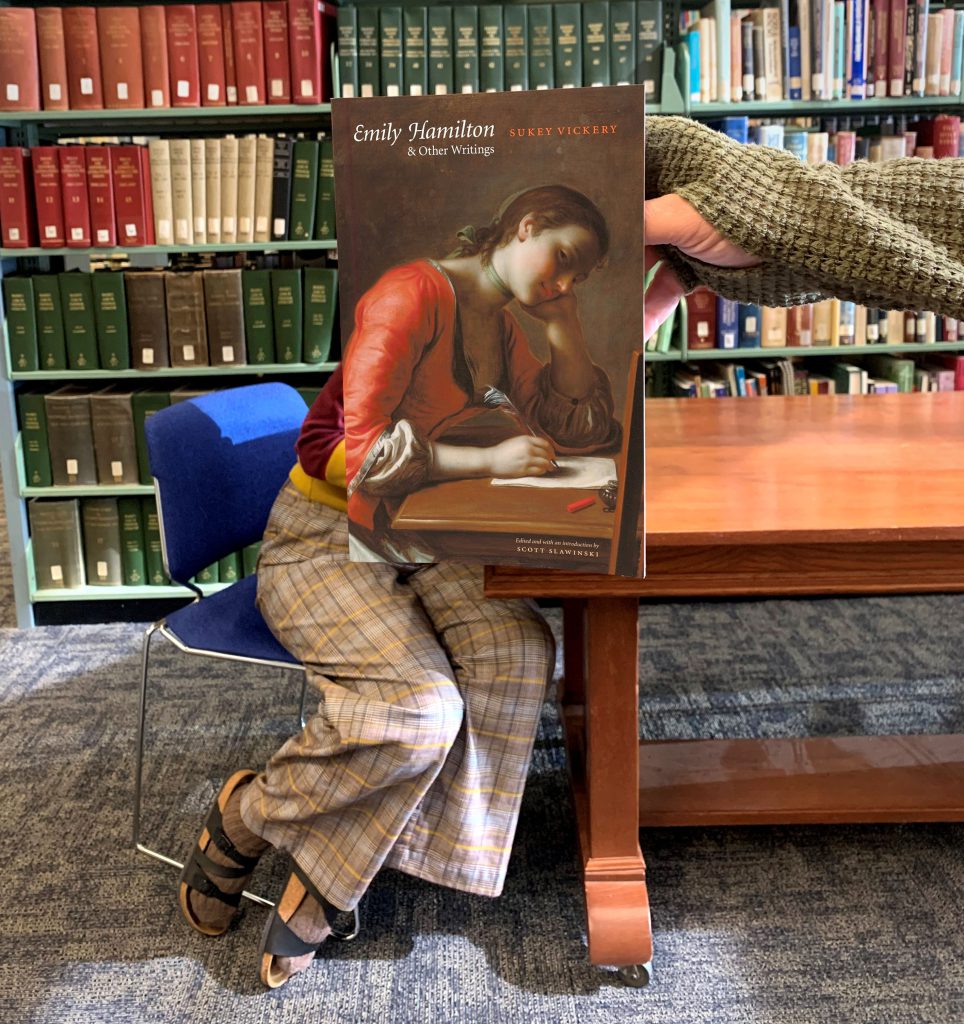
Get your thoughts down on paper just like this week’s #BookFaceFriday, “Emily Hamilton & Other Writings (Legacies of Nineteenth-Century American Women Writers)” by Sukey Vickery, edited by Scott Slawinski (University of Nebraska Press, 2009.) The Nebraska Library Commission’s Collection is always growing; the Nebraska Publications Clearinghouse receives documents every month from all Nebraska state agencies, including the University of Nebraska Press (UNP). UNP books, as well as all Nebraska state documents, are available for checkout by libraries and librarians for their patrons.
The careful editing and cogent and engaging introduction to this volume will guide students and scholars alike, thus helping Sukey Vickery’s work to receive the attention that it deserves.”
—Amy E. Winans, Women’s Studies
“Sukey Vickery’s Emily Hamilton is an epistolary novel dealing with the courtship and marriages of three women. Originally published in 1803, it is one of the earliest examples of realist fiction in America and a departure from other novels at the turn of the nineteenth century. From the outset its author intended it as a realist project, never delving into the overly sentimental plotting or characterization present in much of the writing of Vickery’s contemporaries. Emily Hamilton explores from a decidedly feminine perspective the idea of a woman’s right to choose her own spouse and the importance of female friendship. Vickery’s characterization of women further diverges from the typical eighteenth- and early nineteenth-century didactic of the righteous/sinful woman and depicts, instead, believable female characters exhibiting true-to-life behavior.”
—from the book jacket
Our model this week is a new addition to the Nebraska Library Commission! Welcome to Laura Mooney, our new Federal Documents Staff Assistant. She joins us from the History Nebraska Museum in Lincoln, as their Senior Objects Curator. Laura enjoys reading nonfiction; she’s currently reading a book about Julia Child. She prefers to read physical books, as it gives her a chance to take a break from screens. Along with reading and spending time with her 17 year old cat named Allie, her hobbies include gardening, vintage clothing, and anything related to food (experimenting in the kitchen, learning about food history, etc!) Welcome Laura!
“I’m thrilled to be joining the Nebraska Library Commission, and delighted to be part of the team that is making publications accessible online through digitization. In my first few weeks here I have been digitizing materials from the Nebraska Department of Agriculture and Department on Aging. It’s been fascinating to learn about the depth of information within these collections. There are so many resources that will be useful for scholars, historians, genealogists and more.”
Love this #BookFace & reading? Check out our past #BookFaceFriday photos on the Nebraska Library Commission’s Facebook page!
Friday Reads: Ten Thousand Tries by Amy Makechnie
The other players on the team looked at me funny when I borrowed a ball to take this photo at the end of their practice, but my kid just rolled his eyes and smiled. “Yeah, my mom does stuff like this all the time.” Being a a recurring #BookfaceFriday model has jaded him to the weird things I do with book covers. (He’s even better at lining up the shot than I am now.)
This book is also about a boy whose parents spend a lot of time with him on the soccer field. Golden Maroni’s dad was a pro soccer player, and now coaches the local high school team. His mom coaches Golden’s middle school team – she’s referred to as Coach or Mom depending on the chapter’s setting.
The title refers to Malcolm Gladwell’s assertion in his book “Outliers” that it takes 10,000 hours to achieve mastery of a skill. While Amy Makechnie specifies in her end-of-book acknowledgements that this rule doesn’t apply to sports, our hero Golden is sure that 10,000 hours of soccer practice will make him as phenomenal as his idol Lionel Messi. But off the field, things aren’t going as well.
Lucy, his team co-captain and best friend (and maybe more?), will move soon if Golden can’t drive away her annoying future stepfather. His older sister Jaimes certainly needs another 10,000 hours of driving practice before Golden feels safe riding with her. And worst of all, a year and a half after a surprising diagnosis, Golden’s dad is losing his battle with ALS; no amount of positive thinking and hard work can stop the progression of this terrible disease. It feels like Golden’s whole world is crashing down around him. The Maroni family motto is “We do hard things.” They work hard, play hard, and never give up on each other. But this year will be different, and Golden must learn that letting go isn’t the same as giving up.
This book was chosen as one of the 10 nominees that young adults across the state will read and vote on for the 2023-24 Golden Sower Novel Award next school year.
Makechnie, Amy. Ten Thousand Tries, New York, New York : Simon & Schuster, 2021.
Posted in Books & Reading, General
Tagged Amy Makechnie, books, Friday Reads, Juvenile literature, Reading, realistic fiction, sports fiction, YA, Young Adult
Leave a comment
Book Club Spotlight – A Cuban Girl’s Guide to Tea and Tomorrow
To round out Hispanic Heritage Month, let’s spotlight a book that is as sweet as pastelitos de guayaba! In Laura Taylor Namey’s slow-burn, low-drama romance, A Cuban Girl’s Guide to Tea and Tomorrow, Cuban and English heritage collide over tea, pastries, and familial love. In an interview with Publishers Weekly, Namey explains that her book “hails straight out of my family album… Many places, traditions, foods, and life lessons from my childhood are woven into the story. I tried to take the spirit of people I love, and the truths I learned about identity and legacy and reimagine them into a coming-of-age novel that teens could relate to”. And despite taking place in the cold rain of England, Cuban culture and traditional food are at the forefront of this novel.
As a 2nd generation Cuban immigrant, Lila Reyes has life meticulously planned out. She has an incredible best friend, a long-term boyfriend she adores, and the love of her dear Abuela and her bakery. But when her Abuela suddenly passes away, Lila loses everything. Everything except the certainty in her future as the panadería’s head baker. With her sights firmly set on her future, she tries to push away her depression and trauma, only to end up breaking down mentally and physically. Worried about her health, Lila’s parents send her across the pond to her aunt’s B&B in Winchester, England, for the summer. Soon she is cooking for the whole B&B, exploring the local music scene, making new supportive friends, and growing very close to the tea shop clerk, Orion Maxwell. Orion is not new to grief and is the empathetic and caring shoulder Lila has been hurting for. Together the two navigate their own grief and come to accept what they cannot control while finding the courage to influence what they can, while maybe falling in love along the way.
“You’re painting stars where I colored black holes.”
Laura Taylor Namey
Perfect for a book club of young adult readers whose idea of a perfect fall afternoon is curling up under a blanket with a good book. Despite centering on grief, A Cuban Girl’s Guide to Tea and Tomorrow is not a sad story. It gives the reader space and permission to learn how to feel their emotions without letting them consume everything. Discussion questions with your book group can focus on emotions, Cuban culture, and how interpersonal relationships play an essential part in our lives and keep us healthy. If you’re leading a group of young readers, be careful when discussing the prevalent diet culture in this book. Despite what the characters might say, you don’t need to “earn” a snack or have to “work off” a baked good. Food is nutrition and life. Feel free to explore Cuban food’s wonderfully rich culture and how it can bring families, friends, and even strangers together without feeling “guilty” for enjoying it! So grab your favorite tea and a warm jumper, and dive in!
If you’re interested in requesting this book for your book club, you can find the Book Club Kit Request Form here. (Items must be requested by a librarian)
To see more of our Hispanic/Latino book club titles, visit the link here.
Namey, Laura Taylor. A Cuban Girl’s Guide to Tea and Tomorrow. Atheneum Books. 2020.
Posted in Books & Reading
Tagged book club spotlight, books, Hispanic heritage month, Latinx voices, Reading
2 Comments
Friday Reads: Star Wars: Women of the Galaxy
Who is your favorite woman in the Star Wars universe? You may find her in this wonderful character guide, Star Wars: Women of the Galaxy, written by Amy Ratcliffe and illustrated by a group of incredibly talented female and non-binary artists.
“They are heroes and villains, Sith and Jedi, senators and scoundrels, mothers, mercenaries, artists, pilots….”
This oversized coffee table book tells the stories of 75 female characters from “films, fiction, comics, animation, and games”. Some of the profiles are your typical fictional character biography and others include background information about how the characters were envisioned and created. As a contributor to StarWars.com and Star Wars Insider, Ratcliffe has insider knowledge and shares details about these women that you may have never heard before.
The artwork is beautiful and in varying styles. There are over 100 illustrations from 18 amazing artists, such as comic book artists Annie Wu and Elsa Charretier, Lucasfilm artist Amy Beth Christenson, freelanceers Eli Baumgartner and Viv Tanner, and one of my favorite geeky artists, Karen Hallion.
You will find many characters you recognize as well as lesser known women (and droids!), but all of them make Star Wars a vibrant and inspiring place. I have been a huge Star Wars fan from the very beginning. Yes, I saw Star Wars in the theater in 1977. But the franchise has expanded so much since then, even I learned about many female characters I had never heard of, mostly from all of the novels and comics. Which has made my need-to-read list even longer!
Who is my favorite woman of Star Wars? I can’t pick just one. My first choice of course is Princess Leia, more recently Ahsoka, R2-KT, and Doctor Aphra. And of course, as the Chief Librarian of the Jedi Archives, Jocasta Nu holds a special place in my heart.
Finally, as the first woman of the Star Wars galaxy, the simple dedication For Carrie Fisher is perfect.
#BookFaceFriday “Catfish at the Pump” by Roger Welsch & Linda Welsch
This #BookFaceFriday is a whopper!
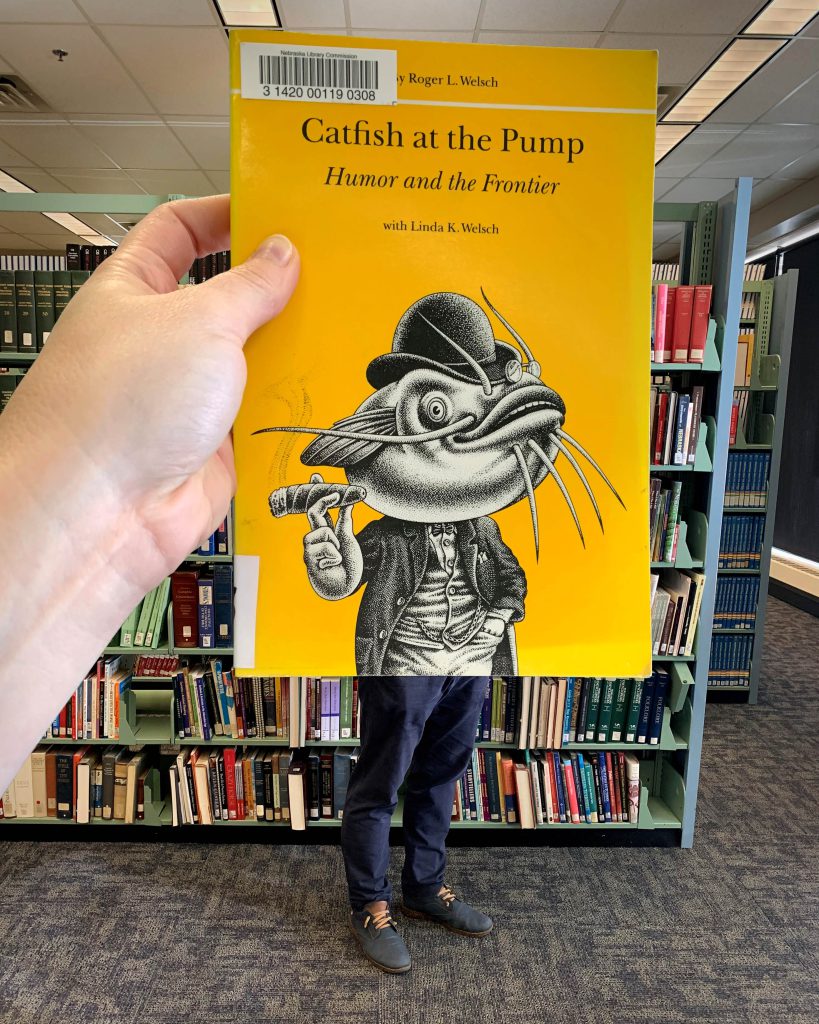
This week’s #BookFace is for a very special Nebraska author, known for his pioneer humor and wit, Roger Welsch. We wanted to take the time to highlight his many works in our various collections, like “Catfish at the Pump: Humor and the Frontier” by Roger L. Welsch and Linda K. Welsch (University of Nebraska Press, 1986), available as an NLC Book Club Kit. In total, NLC has eleven of Welsch’s titles in our Book Club Kit Collection. You can also find Welsch’s work through Nebraska OverDrive Libraries, we have copies of “Embracing Fry Bread: Confessions of a Wannabe”, “Why I’m an Only Child and Other Slightly Naughty Plains Folktales”, and “Wyoming Folklore: Reminiscences, Folktales, Beliefs, Customs, and Folk Speech” by Federal Writers’ Project.
“Were our forefathers liars? ‘You bet they were, ‘ says Roger Welsch, ‘and damned fine ones at that.’ From yellowed newspapers, magazines, and forgotten Nebraska Federal Writers’ Project files, well-known folklorist and humorist Welsch has produced a book to be treasured. Here are jokes, anecdotes, legends, tall tales, and lugubriously funny poems about the things that preoccupied the pioneer plainsman: weather extremes; soil quality; food and whiskey; an arkload of animals, including grasshoppers, bed bugs, hoop snakes, the ubiquitous mule, and some mighty big fish.”
―from the back cover
TBBS borrowers can request or download several Roger Welsch titles from the National Library Service BARD (Braille and Audio Reading Download) website. If you have high-speed internet access, you can download books to your smartphone or tablet, or onto a flash drive for use with your player. You may also contact your reader’s advisor to have the book mailed to you on cartridge.
Available on Duplication on Demand (physical cartridge) and download on BARD:
DB45458 Uncle Smoke Stories: Four Fires in the Big Belly Lodge of the Nehawka
DBC01987 It’s Not the End of the Earth, but You Can See It from Here: Tales of the Great Plains
DBC13621 Mister, You Got Yourself a Horse: Tales of Old-Time Horse Trading
Available on cartridge only:
DB00941 Love, Sex and Tractors: The Eternal Triangle DB01042 Forty Acres and a Fool: How to Live in the Country and Still Keep Your Sanity
Book Club Kits Rules for Use
- These kits can be checked out by the librarians of Nebraska libraries and media centers.
- Circulation times are flexible and will be based upon availability. There is no standard check-out time for book club kits.
- Please search the collection to select items you wish to borrow and use the REQUEST THIS KIT icon to borrow items.
- Contact the Information Desk at the Library Commission if you have any questions: by phone: 800/307-2665, or by email: Information Services Team
Find this title and many more through Nebraska OverDrive! Libraries participating in the Nebraska OverDrive Libraries Group currently have access to a shared and growing collection of digital downloadable audiobooks and eBooks. 189 libraries across the state share the Nebraska OverDrive collection of 21,696 audiobooks, 35,200 eBooks, and 3,964 magazines. As an added bonus it includes 130 podcasts that are always available with simultaneous use (SU), as well as SU ebooks and audiobook titles that publishers have made available for a limited time. If you’re a part of it, let your users know about this great title, and if you’re not a member yet, find more information about participating in Nebraska Overdrive Libraries!
Love this #BookFace & reading? Check out our past #BookFaceFriday photos on the Nebraska Library Commission’s Facebook page!
Friday Reads: The Well by Jake Wyatt
What would you wish for?
The Well is a full color graphic novel published for high school readers. Li-Zhen, called Lizzy, lives with her grandfather and for the first time she will travel to town by herself with some goats to sell, riding in a sailboat in which her friend Eli now rows. While in town, she snitches some coins from a sacred fountain to pay for her return trip. After returning home she is visited that night in her sleep. The well demands repayment, not in coins but in wishes. Lizzy must find a way to provide what has been wished for, or she will be drowned. The well’s servant says it is the wishes connected to each of the three coins that are valuable, not the coins. She has to talk friends and strangers into helping her and she only has a day to accomplish each task. Each task is different, and the last task may kill her.
One of the things that appealed to me about this book is the care put into wishing. Little children wish for candy or toys, they said, but wishing should be more thoughtful. Eli tells Lizzy that her mother explained it this way: “…first you’re supposed to think about what you have, what you are grateful for. Then think about what you want out of life.”
For the first task she asks for help from Eli, and they end up kidnapping a woman who has wished to return to her island, but now no longer wants to go there. The island was destroyed by the leviathan. The well doesn’t care about current wants or changes in wishes. It wants her to give what was wished for on the stolen coin, however long ago the wish was made.
This past summer I saw the movie “Three Thousand Years of Longing” with Idris Elba playing a genie. Wishes are a big part of his existence. That movie and this graphic novel made me think more about wishes. Fairy tales often have wishes involved, almost always tricking the wisher. I liked what Eli said in the book about wishing. It can be done too quickly with little contemplation as to the likely result of the wish. Maybe wishes should stay in our hearts and not be spoken out loud.
(The Nebraska Library Commission receives free copies of children’s and young adult books for review from a number of publishers. After review, the books are distributed free, via the Regional Library Systems, to Nebraska school and public libraries.)
Wyatt, Jake. The Well. First Second, 2022.
What’s Up Doc? New State Agency Publications at the Nebraska Library Commission
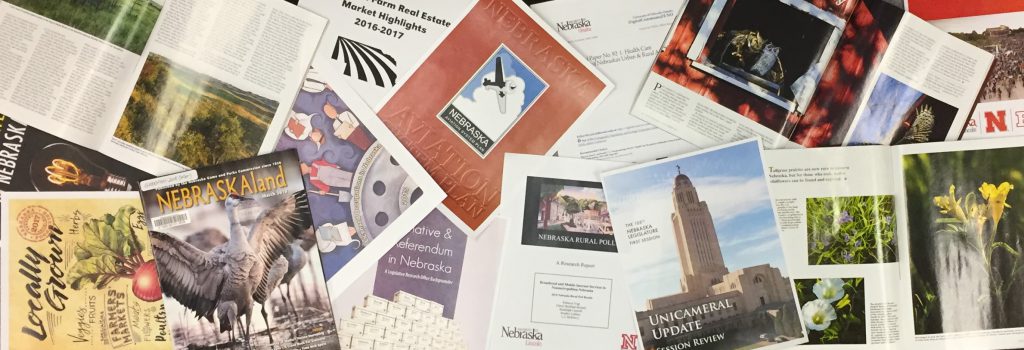
New state agency publications have been received at the Nebraska Library Commission for July and August 2022. Included are reports from the Nebraska Auditor of Public Accounts, the Nebraska Board of Examiners, the Nebraska Department of Education, the Nebraska Department Transportation, and new books from the University of Nebraska Press, to name a few.
Most items, except the books from the University of Nebraska Press, are available for immediate viewing and printing by clicking on the highlighted link above, or directly in the .pdf below. You can read synopses of the books received from the University of Nebraska Press in the Book Briefs blogposts.
The Nebraska Legislature created the Nebraska Publications Clearinghouse in 1972 as a service of the Nebraska Library Commission. Its purpose is to collect, preserve, and provide access to all public information published by Nebraska state agencies. By law (State Statutes 51-411 to 51-413) all Nebraska state agencies are required to submit their published documents to the Clearinghouse. For more information, visit the Nebraska Publications Clearinghouse page, contact Mary Sauers, Government Information Services Librarian; or contact Bonnie Henzel, State Documents Staff Assistant.
Book Briefs: New University of Nebraska Press Books at the Nebraska Publications Clearinghouse
The Nebraska Publications Clearinghouse receives documents every month from all Nebraska state agencies, including the University of Nebraska Press (UNP). Each month we will be showcasing the UNP books that the Clearinghouse has received.
UNP books, as well as all Nebraska state documents, are available for checkout by libraries and librarians for their patrons.
Here are the UNP books the Clearinghouse received in July and August, 2022:
Journey into Christmas, and, Star Across the Tracks, by Bess Streeter Aldrich.
The true meaning of Christmas emerges in Bess Streeter Aldrich’s two enchanting stories about reunited families, good fellowship, and restored faith. The head may tell the heart all sorts of things, but at Christmastime the heart is stronger, so take a journey back through Christmases when something quite ordinary turns out to be miraculous. Both heartfelt and genuine, the stories “Journey into Christmas” and “Star across the Tracks” remind us to cherish the holidays with those we love, the ways we grow, and the memories we make throughout life.
Mummy Eaters, by Sherry Shenoda ; Series: African Poetry Book
Winner of the Sillerman First Book Prize for African Poets, Sherry Shenoda’s collection Mummy Eaters follows in the footsteps of an imagined ancestor, one of the daughters of the house of Akhenaten in the Eighteenth Dynasty, Egypt. Shenoda forges an imagined path through her ancestor’s mummification and journey to the afterlife. Parallel to this exploration run the implications of colonialism on her passage.
The mythology of the ancient Egyptians was oriented toward resurrection through the preservation of the human body in mummification. Shenoda juxtaposes this reverence for the human body as sacred matter and a pathway to eternal life with the sixteenth- and seventeenth-century European fascination with ingesting Egyptian human remains as medicine and using exhumed Egyptian mummies as paper, paint, and fertilizer. Today Egyptian human remains are displayed in museums. Much of Mummy Eaters is written as a call and response, in the Coptic tradition, between the imagined ancestor and the author as descendant.
If This Were Fiction : A Love Story in Essays, by Jill Christman ; Series: American Lives
If This Were Fiction is a love story—for Jill Christman’s long-ago fiancé, who died young in a car accident; for her children; for her husband, Mark; and ultimately, for herself. In this collection, Christman takes on the wide range of situations and landscapes she encountered on her journey from wild child through wounded teen to mother, teacher, writer, and wife. In these pages there are fatal accidents and miraculous births; a grief pilgrimage that takes Christman to jungles, volcanoes, and caves in Central America; and meditations on everything from sexual trauma and the more benign accidents of childhood to gun violence, indoor cycling, unlikely romance, and even a ghost or two.
Playing like a lively mixtape in both subject and style, If This Were Fiction focuses an open-hearted, frequently funny, clear-eyed feminist lens on Christman’s first fifty years and sends out a message of love, power, and hope.
Vanished : Stories, by Karin Lin-Greenberg ; Series: The Raz/Shumaker Prairie Schooner Book Prize in Fiction
Winner of the Raz/Shumaker Prairie Schooner Book Prize in Fiction, Vanished tells the stories of women and girls in upstate New York who are often overlooked or unseen by the people around them. The characters range from an aging art professor whose students are uninterested in learning what she has to teach, to a young girl who becomes the victim of a cruel prank in a swimming pool, to a television producer who regrets allowing her coworkers into her mother’s bird-filled house to film a show about animal hoarding because it will reveal too much about her family and past.
Humorous and empathetic, the collection exposes the adversity in each character’s life; each deals with something or someone who has vanished—a person close to her, a friendship, a relationship—as she seeks to make sense of the world around her in the wake of that loss.
Under My Bed and Other Essays, by Jody Keisner ; Series: American Lives
Jody Keisner was raised in rural Nebraska towns by a volatile father and kind but passive mother. As a young adult living alone for the first time, she began a nighttime ritual of checking under her bed each night, not sure who she was afraid of finding. An intruder? A monster? Her father? Keisner’s fears mature as she becomes a wife and mother, and the boogeyman under the bed shape-shifts, though its shapes are no less frightening—a young aunt’s drowning, the “chest chomp” in the classic horror movie The Thing, a diagnosis of a chronic autoimmune disease, the murder of a young college student, an eccentric grandmother’s belief in reincarnation and her dying advice: “Don’t be afraid.”
In Under My Bed and Other Essays, Jody Keisner searches for the roots of the violence and fear that afflict women, starting with the working-class midwestern family she was adopted into and ending with her own experience of mothering daughters. In essays both literary and experimental, Keisner illustrates the tension between the illusion of safety, our desire for control, and our struggle to keep the things we fear from reaching out and pulling us under.
Cotton Candy : Poems Dipped Out of the Air, by Ted Kooser
“Poems dipped out of the air” describes the manner in which Ted Kooser composed the poems in Cotton Candy, the result of his daily routine of getting up long before dawn, sitting with coffee, pen, and notebook, and writing whatever drifts into his mind. Whether those words and images are serious or just plain silly, Kooser tries not to censor himself. His objective is to catch whatever comes to him, to snatch it out of the air in words, rhythms, and cadences, the way a cotton candy vendor dips an airy puff out of a cloud of spun sugar and hands it to his customer. Poems written in fun and now shared with the reader, Kooser’s playful and magical confections charm and delight.
**Pictures and Synopses courtesy of University of Nebraska Press.
Book Club Spotlight – One Hundred Years of Solitude
For Hispanic Heritage Month (September 15-October 15), I wanted to spotlight a particular writing style popularized and, in my opinion, perfected in Latin America. I became interested in Magical Realism through an article on Book Riot about Disney’s Encanto. The article explains Magical Realism as: “having magical/supernatural elements presented in an otherwise mundane setting…Magical Realism does not rely on heavy exposition or narration. Everything, according to the reticent narrator, is as it should be.” And today’s book One Hundred Years of Solitude by Gabriel García Márquez is one of the most famous examples of Magical Realism. Being the second most translated literary work in Spanish after Don Quixote, One Hundred Years is brimming with magic; Flowers raining from the sky, insomnia plagues, and beautiful women simply floating away. Yet, while the characters go about their lives, they don’t seem to realize that the world around them is magical. Everything is as it should be.
The 1967 novel One Hundred Years of Solitude begins with the first of its seven generations of the Buendía family. José Arcadio Buendía, with his wife/cousin Úrsula Iguarán, established an isolated village named Macondo and began to raise their family in that small community. And as the years go by, the family (all named after each other) grows and faces hardships, usually stemming from their ambitions to reach higher and go farther than they are able to. After being visited by the worldly Romani people and wanting to explore what the world has to offer, Macondo eventually grows into a thriving city with a train station and a banana plantation. However, when civil war begins to tear the country apart, and the plantation turns against its workers, the Buendía men and women live and die by their beliefs, and the family name lives on for better or worse. Through a cyclical repetition of misfortunes, battles, and incest, the house of the Buendía stands through the long years with Úrsula as their matriarch. But the family’s fate is controlled by the ceaseless march of time, and ghosts of their past (real and imagined) are waiting at the end of those 100 years.
“Lost in the solitude of his immense power, he began to lose direction”
Gabriel García Márquez
As José Arcadio Buendía built Macondo by following a dream of building a beautiful city of mirrors, Márquez created Macondo to mirror our own world, especially that of Columbia and its imperialists. One Hundred Years of Solitude, while representing many aspects of Columbian life, is also a socio-political critique of Western Imperialism’s effect on Columbia. The banana plantation that overruns the town and its subsequent destruction is based on the Banana Massacre that Márquez experienced as a child. And the long war that takes Colonel Aureliano Buendía away from home is Columbia’s brutal Thousand Days’ War. For a book group, there is no shortage of ways to move your discussion. Topics can range from how Márquez shows the cyclical nature of history. Or how the Buendía family affected each other, all living under one roof for so long. And, of course, how the symbolism of Magical Realism drives the story. You also might need to consult a family tree to reference as you read along.
If you’re interested in requesting this book for your book club, you can find the Book Club Kit Request Form here. (Items must be requested by a librarian)
To see more our our Hispanic/Latino book club titles, visit the link here.
Márquez, Gabriel García. One Hundred Years of Solitude. Harper Collins. 1967.
Posted in Books & Reading
Tagged book club spotlight, books, Hispanic heritage month, Latinx voices, Reading
Leave a comment
Friday Reads: While My Pretty One Knits by Anne Canadeo
There is nothing like a good mystery.
While My Pretty One Knits is not exactly what I would call a good mystery. The murderer’s identity was obvious before the close of the first chapter. The village of Plum Harbor unequivocally fails to process – or even react much to — the brutal murder of one of their fellow villagers (it was brutal! And, as the book itself repeatedly reminds us, it was bloody!). There are enough knitting inaccuracies that unravel long enough to purl a swoncho. The knitting group doesn’t so much solve a murder so much as they stumble around talking about the murder, and incidentally and coincidentally facilitate the solving of the crime. And, as my fiancée put it with nothing but fondness, our dear anxious protagonist Lucy is “a bit touched in the head.”
Yet I finished the book feeling…well, cozy.
There were no high stakes (ignoring the fact that, had the murder gone unsolved, a cold-blooded killer would have gotten off scot-free). There was a dog (who did more work to solve the case than her human caretaker). There was knitting and humor. It was the cross between Hallmark and Lifetime that I’ve been seeking, even if the needles pointed more towards Hallmark. And it was, simply, fun.
Our core cast of characters include Maggie, the shop owner; Lucy, the newly divorced graphic designer; Dana, the psychologist; Suzanne, the real estate agent and mother; and Phoebe, the college student. There are many more characters, which helps the village feel populated, although in audiobook format it was difficult to keep everyone straight, and I eventually stopped trying. Familiarity will hopefully come with time.
I don’t hold out much hope that, as I continue the series, the ridiculously high statistics for murder per capita in Plum Harbor will be cause for concern. Luckily, the group has Suzanne. When the population dips down too low to support the village economy, they’ll have a head start on packing up and moving out.
I am, however, optimistic that the knitters of The Black Sheep will learn and change and grow. That’s what I’m interested in. And, I realize, as I frog back my snobbery; that’s what all cozy mystery aficionados are interested in. That’s what the writer is interested in. It was never about the mystery — it was about the characters.
And isn’t that warmer than a wool sweater?
Canadeo, Anne. While My Pretty One Knits. Pocket Books, 2009.
#BookFaceFriday “New Kid” by Jerry Craft
We’re united in our love for this #BookFaceFriday!
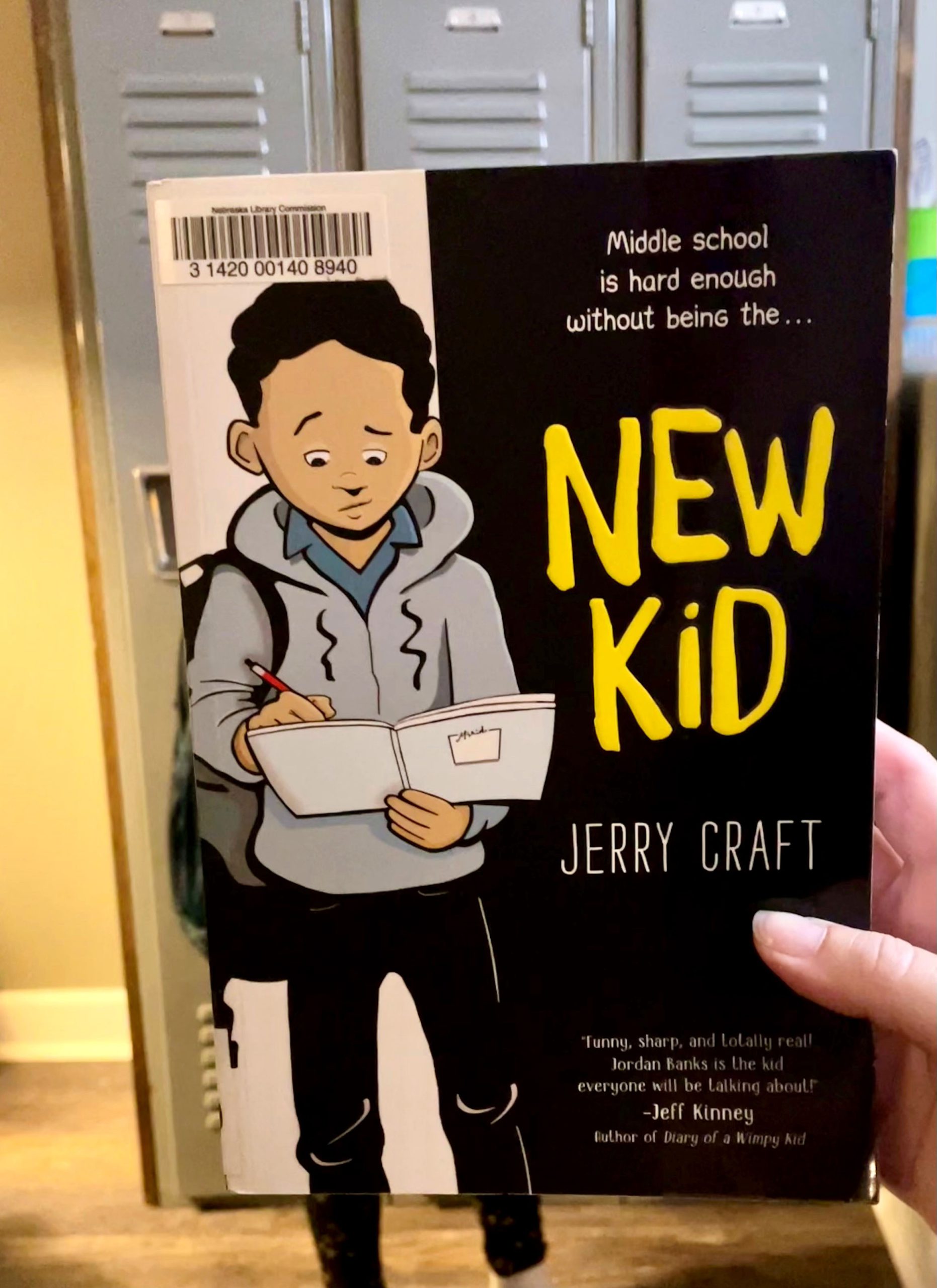
Books unite us. Censorship divides us. That’s the theme of this year’s #BannedBooksWeek. We are celebrating with banned #BookFace! The Nebraska Library Commission supports readers and the freedom to read so we make sure our various collections reflect that. “New Kid” by Jerry Craft (Quill Tree Books, 2019) has been banned or challenged in the US, cited for “Critical Race Theory and Marxism.” New Kid is the winner of the Newbery Medal, the Coretta Scott King Author Award, and the Kirkus Prize for Young Reader’s Literature. It’s available as a book club kit, or as an eBook and Audiobook on Nebraska OverDrive Libraries. A book is considered challenged when calls are made for it to be banned or removed from the public’s access. This is one of many banned or challenged titles NLC has available in our Book Club Kit Collection, titles like A Wrinkle in Time by Madeleine L’Engle, Beloved by Toni Morrison, the Harry Potter Series by J.K. Rowling, just to name a few. This week’s #BookFace and other banned books can be found on the NLC Book Club Kit webpage. This service allows libraries and school librarians to “check out” multiple copies of a book without adding to their permanent collections, or budgets. NLC also has several banned or challenged titles available to our Nebraska OverDrive Libraries.
“This is more than a story about being the new kid—it’s a complex examination of the micro- and macroaggressions that Jordan endures from classmates and teachers. Highly recommended for all middle grade shelves.”
— School Library Journal (starred review)
You can find more information about Banned Books Week and the fight against censorship at ALA.org/advocacy/bbooks! What are you doing to celebrate Banned Books Week? Let us know!
Book Club Kits Rules for Use
- These kits can be checked out by the librarians of Nebraska libraries and media centers.
- Circulation times are flexible and will be based upon availability. There is no standard check-out time for book club kits.
- Please search the collection to select items you wish to borrow and use the REQUEST THIS KIT icon to borrow items.
- Contact the Information Desk at the Library Commission if you have any questions: by phone: 800/307-2665, or by email: Information Services Team
Love this #BookFace & reading? Check out our past #BookFaceFriday photos on the Nebraska Library Commission’s Facebook page!
Posted in Books & Reading, General
Tagged Banned Books Week, Book Club Kits, Book Covers, bookface, bookfacefriday, Jerry Craft, New Kid, Reading
Leave a comment
NCompass Live: Letters About Literature 2022
Learn about Nebraska’s state reading and writing contest for youth, Letters About Literature, on this week’s NCompass Live webinar on Wednesday, September 21 at 10am CT.
The Nebraska Center for the Book is a statewide organization dedicated to the promotion of reading in all its forms. Its annual Nebraska Letters About Literature contest allows students in 4th through 12th grade to write to authors (living or deceased) about their favorite book or poem about how his or her book affected their lives. This session will provide helpful information for teachers and librarians interested in the competition. It will also cover the submission process and be an excellent opportunity to ask questions about the entire competition process. Teachers will be interested in this program that will help enhance and extend their classroom instruction.
Presenters: Tessa Terry – Communications Coordinator, Nebraska Library Commission; Richard Miller – Nebraska Center for the Book Board Member; Laurie Yocom, Director, Wilson Public Library; and Sally Snyder, Childrens’ Judge, Letters About Literature, Nebraska Library Commission.

Upcoming NCompass Live shows:
- Sept. 28 – Pretty Sweet Tech: Programming a Robot Using Voice Commands
- Oct. 5 – NO NCOMPASS LIVE THIS WEEK – ENJOY NLA!
- Oct. 12 – Navigating the New NebraskAccess
- Oct. 19 – NLC Grants for 2023
For more information, to register for NCompass Live, or to listen to recordings of past events, go to the NCompass Live webpage.
NCompass Live is broadcast live every Wednesday from 10am – 11am Central Time. Convert to your time zone on the Official U.S. Time website. The show is presented online using the GoToWebinar online meeting service. Before you attend a session, please see the NLC Online Sessions webpage for detailed information about GoToWebinar, including system requirements, firewall permissions, and equipment requirements for computer speakers and microphones.
Friday Reads: Shards of Earth, by Adrian Tchaikovsky
Shards of Earth, by Adrian Tchaikovsky, is science fiction, by a British science fiction and fantasy master. The characters are engaging, human, (and intriguing when not human.) The idea of an alien which is moon sized that can travel faster than light, each a single being, called the Architects, is remarkable. That it’s an absolute killing machine pointed at all inhabited worlds pulls the fractured colonies of Earth and all the known aliens into war against it. The story is not about the war as much as about the final secret weapon that made victory possible. And what happens to that weapon after the war. This only makes sense in that the weapons that win the war are called Intermediaries (Ints), and are humans, medically and chemically modified to be able to mentally contact the Architects. Idris Telemmier is one of the few remaining original class of Intermediaries. He is a war hero. Due to his modifications, he hasn’t aged since the end of the war fifty years ago. Intermediaries can contact Architects, and they can pilot deep space craft through unspace, without having to sleep during the process.
Unspace, unlike some forms of faster than light travel, must be experienced by most sentient beings asleep. If they are awake, they are immediately isolated from other travelers on the ship in unspace. Not only of being alone, but also of being alone with a hostile, unspeakable being that they can’t see, only sense. Most ships travel old routes mechanically, with the pilot being the first to wake, but Intermediary pilots go through unspace awake. They can plot new paths to objects, making Idris especially valuable to his crew on the Vulture God, a salvage ship.
An old war acquaintance of his, Myrmidon Solace, is tasked with contacting Idris on the ship he currently pilots. Solace is from a genetically engineered, and vat grown race of human women warriors who live on their ships, and they are known as the Parthenon. They do not have Intermediaries. Hugh (Council of Human Interests), the governing body of the colonies controls the program, and licenses them. Hugh won’t license any to the Parthenon in the post war era.
Making Intermediaries is an uncertain business. Idris, being first generation, is even more unusual, since he hasn’t aged, and can’t sleep. He’s one of two or three surviving from that first generation. He’s content to work on the salvage ship. The trouble starts with a shore leave where a rich man decides to confiscate him, since later Ints are licensed and conditioned with a “leash” contract (making them more like property.). That doesn’t pertain to Idris. His crew, with Solace, manage to get him off planet, but the job they pick up next only multiplies their troubles—it’s a modern salvage that has the distinctive, destructive design of an Architect kill. Except the war ended fifty years ago, with the disappearance of the Architects, and no one has seen one since.
While some reviewers compare the story to Star Wars and Star Trek, there is a lot more here, and a far more patched up universe. The characters are interesting, the main ones are three-dimensional, and the world building is complex, with more than one political system. One of the characters is Oliana (Olli) Timo, a woman who’s colony found all human life precious, even a child with stunted arms, part of one leg and no sense of her own body—since the age of thee she had become a remote vehicle specialist. And easily one of the strongest, and most physically powerful characters in the story. Which is why she has a very big problem with Solace, a vat grown perfect human. There are more interesting points like these that made the entire story deeper than many of the “space opera” style stories. There’s a colonies’ wide “nationalist” movement to put “humans”, the original type from Earth, first, and that all other types are traitors. Which also has a violent arm. There’s a race no one’s seen, but has lost their planets to the Architects, called Locusts, who use planets to create world ships. There’s an alien mobster and a human aristocrat, who both want to own Idris. And there’s a spy/cop, who is just trying to figure it all out.
With complicated characters, great plotting, and constant action, this is one of the best books I’ve read lately, and I’ve just read the sequel, Eyes of the Void. I’m looking forward to Lords of Uncreation, due out in 2023.
Shards of Earth, The Final Architecture: Book One, by Adrian Tchaikovsky, Orbitbooks.net, Hardback, 2022
British Science Fiction Association (BSFA) award winner for best novel, 2022.
Posted in Books & Reading
Tagged Adrian Tchaikovsky, Fantasy, Friday Reads, Science Fiction, Shards of Earth
Leave a comment
#BookFaceFriday “The Windsor Knot” by SJ Bennett
Keep calm and carry on with this #BookFaceFriday!

“Cowards falter, but danger is often overcome by those who nobly dare.” All hail #BookFaceFriday, we are rolling out the red carpet for this week’s book! Brew your self a nice cuppa and sit down with a good book, like “The Windsor Knot: A Novel” by SJ Bennett (William Morrow, 2021.) This title is available as both an eBook and an Audiobook in Nebraska OverDrive Libraries, we also have the second book in Bennett’s Her Majesty the Queen Investigates series “All the Queen’s Men” available as well.
“Her Majesty, … unshockable and mystery-savvy, … uses her long but subtle reach, powers of observation, and decades (and decades!) of sizing up people to solve several crimes… Mystery readers—and royalists, of course—will enjoy their audience with QEII.”
– Booklist
Find this title and many more through Nebraska OverDrive! Libraries participating in the Nebraska OverDrive Libraries Group currently have access to a shared and growing collection of digital downloadable audiobooks and eBooks. 189 libraries across the state share the Nebraska OverDrive collection of 21,696 audiobooks, 35,200 eBooks, and 3,964 magazines. As an added bonus it includes 130 podcasts that are always available with simultaneous use (SU), as well as SU ebooks and audiobook titles that publishers have made available for a limited time. If you’re a part of it, let your users know about this great title, and if you’re not a member yet, find more information about participating in Nebraska Overdrive Libraries!
Love this #BookFace & reading? Check out our past #BookFaceFriday photos on the Nebraska Library Commission’s Facebook page!
Nebraska Libraries Report 1,381,624 Minutes of Reading for Summer 2022
FOR IMMEDIATE RELEASE:
September 15, 2022
FOR MORE INFORMATION, CONTACT:
Denise Harders
402-462-1975
denise.cpls@gmail.com
Central Plains Library System
Nebraska Libraries Report 1,381,624 Minutes of Reading for Summer, 2022
Summer reading programs are helping students become better readers
Hastings, Nebraska – Since mid-May, more than 100 Nebraska libraries have been carrying out summer reading programs that have allowed patrons of all ages to log their reading progress.
As of August 3, 2022, readers have logged:
1,381,624 minutes read
12,153 books completed
131,179 pages read
The Nebraska Library Commission and the Nebraska Regional Library Systems have worked to engage more than 100 libraries in summer reading programs through an innovative reading app called Reader Zone. These programs consist of participants of all ages with the majority being kindergarten through 6th grade.
Success in 2022 follows similar reading success for Nebraska readers in 2020 and 2021. Each of those years also saw more than one million minutes of reading logged by Nebraskans in summer reading programs.
“We are excited to have another successful summer reading season in Nebraska libraries and we thank all our hard-working librarians and our wonderful patrons for their dedication to literacy and reading,” said Denise Harders, Director of the Central Plains Library System. “Our libraries will continue to offer Nebraskans quality programs that can build positive reading habits for readers of all ages”.
Nebraska libraries offer ongoing reading programs like “1000 Books Before Kindergarten” for young children and many compelling programs for teens and adults. These programs are free to Nebraskans in every corner of the state.
“Seeing Nebraska readers reach a third summer in a row of more than 1 million minutes demonstrates that there are many dedicated public librarians and engaged families throughout the state. Students will return to school in the fall with their hard-earned reading skills sharpened and ready to learn,” Jake Ball, creator of Reader Zone.
Reader Zone is a web-based reading program and app that helps organizations build and deploy meaningful reading programs. Reader Zone offers a mobile app that makes participation in reading programs simple and rewarding for readers of all ages.
The Nebraska Regional Library Systems consist of four non-profit corporations governed by boards representative of libraries and citizens in the region. Systems provide access to improved library services by facilitating cooperation among all types of libraries and media centers within the counties included in each System area.
As the state library agency, the Nebraska Library Commission is an advocate for the library and information needs of all Nebraskans. The mission of the Library Commission is statewide promotion, development, and coordination of library and information services, bringing together people and information. The most up-to-date news releases from the Nebraska Library Commission are always available on the Library Commission website, http://nlc.nebraska.gov/publications/newsreleases.
# # #
Posted in Books & Reading, General, Public Relations, Technology
Tagged books, Nebraska Libraries, Reader Zone, Reading, Summer Reading Program
Leave a comment
Call for Speakers: Big Talk From Small Libraries 2023

The Call for Speakers for Big Talk From Small Libraries 2023 is now open!
This free one-day online conference is tailored for librarians from small libraries; the smaller the better!
Small libraries of all types – public, academic, school, museum, special, etc. – are encouraged to submit a proposal. We’re looking for seven 50-minute presentations and four 10-minute “lightning round” presentations.
Do you offer a service or program at your small library that other librarians might like to hear about? Have you implemented a new (or old) technology, hosted an event, partnered with others in your community, or just done something really cool? The Big Talk From Small Libraries online conference gives you the opportunity to share what you’ve done, while learning what your colleagues in other small libraries are doing.
Here are some possible topics to get you thinking:
- Unique Libraries
- Special Collections
- New buildings
- Fundraising
- Improved Workflows
- Staff Development
- Advocacy Efforts
- Community Partnerships
- That great thing you’re doing at your library!
Submit your proposal by Friday, December 16, 2022.
Speakers from libraries serving fewer than 10,000 people will be preferred, but presentations from libraries with larger service populations will be considered.
Big Talk From Small Libraries 2023 will be held on Friday, February 24, 2023 between 8:45 a.m. and 5:00 p.m. (CT) via the GoToWebinar online meeting service. Speakers will present their programs from their own desktops. The schedule will accommodate speakers’ time-zones.
This conference is organized and hosted by the Nebraska Library Commission and is co-sponsored by the Association for Rural & Small Libraries.
Photo by Patrick Fore on Unsplash
